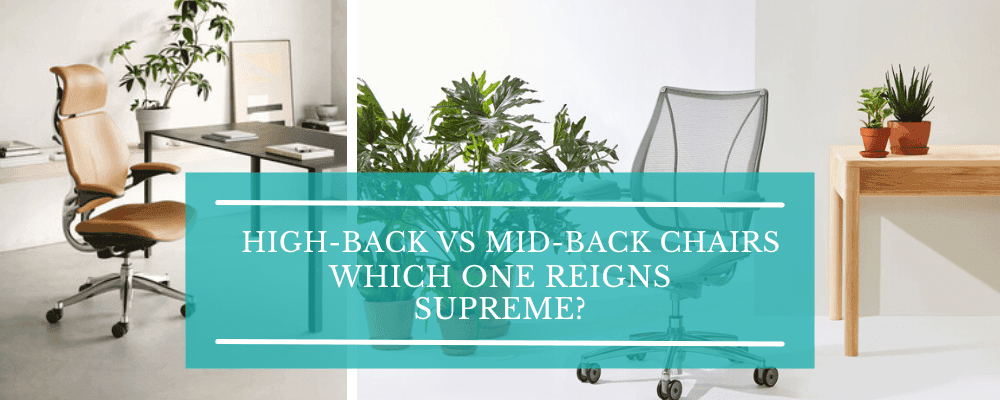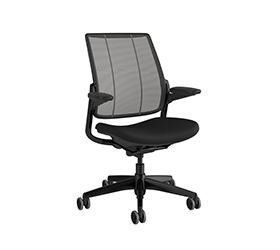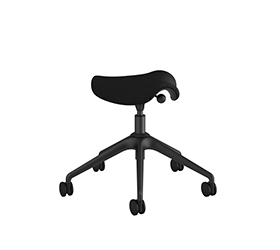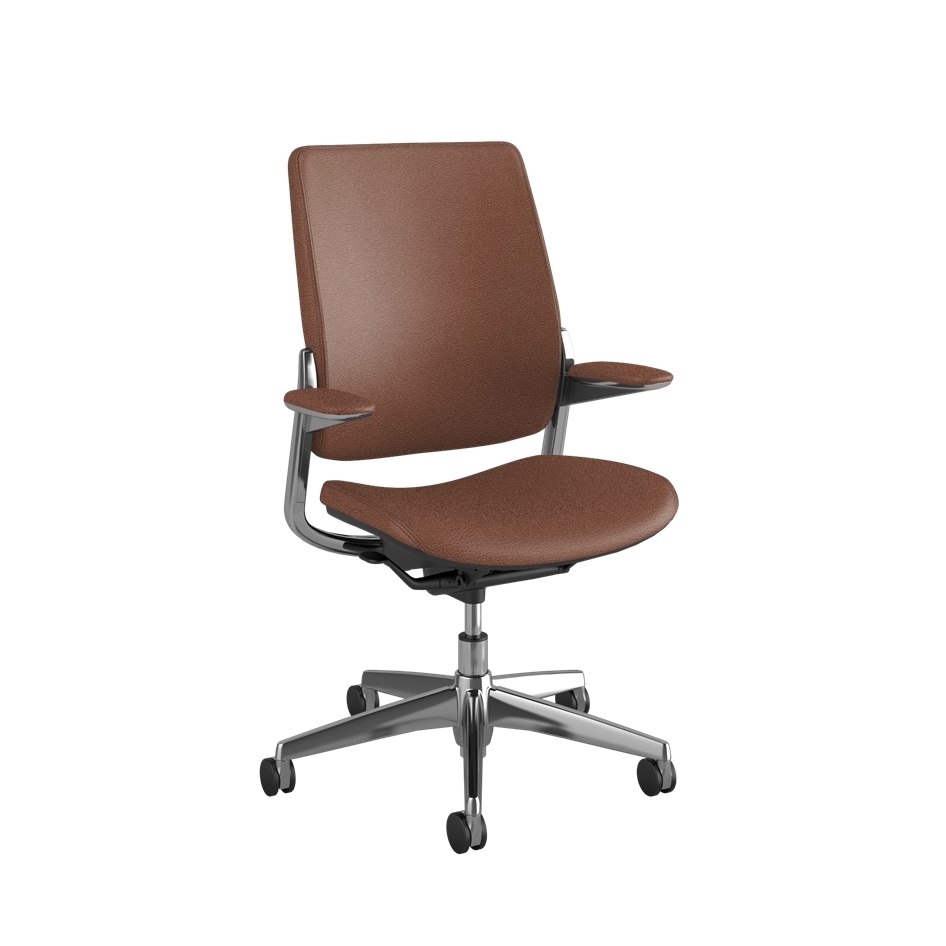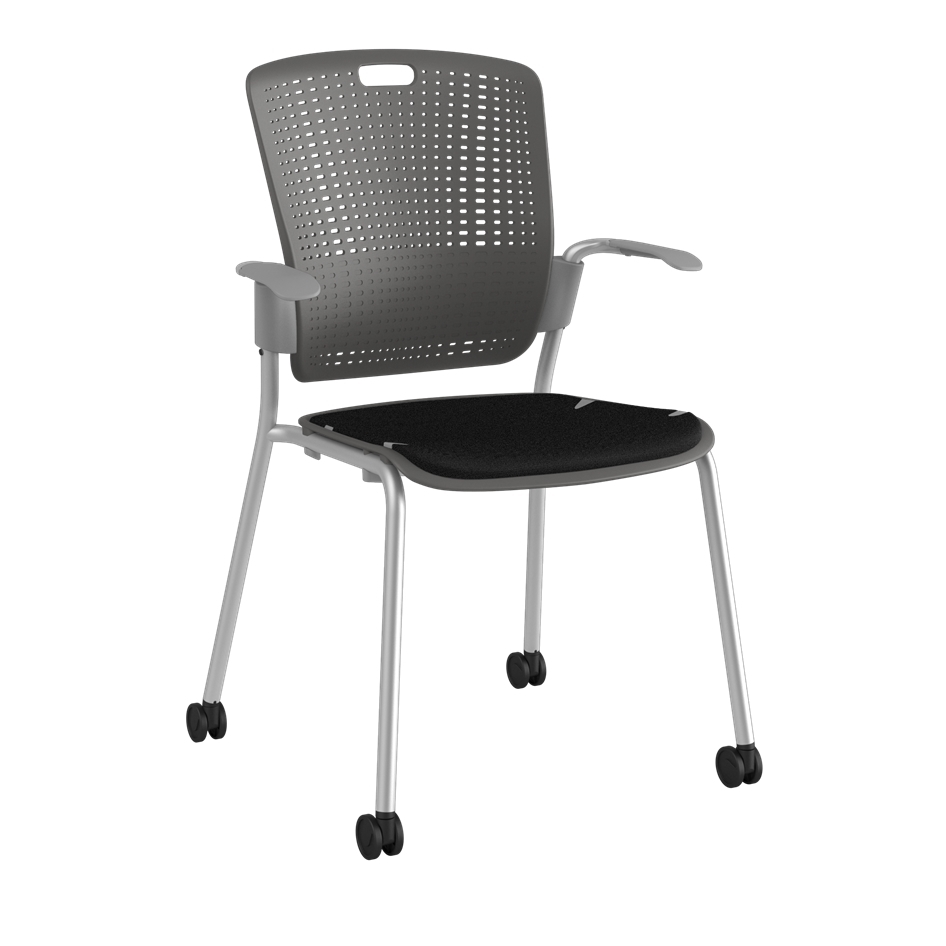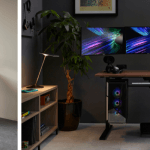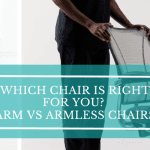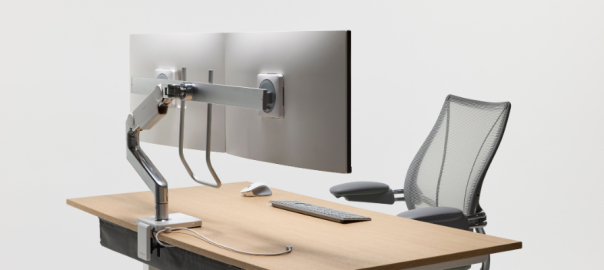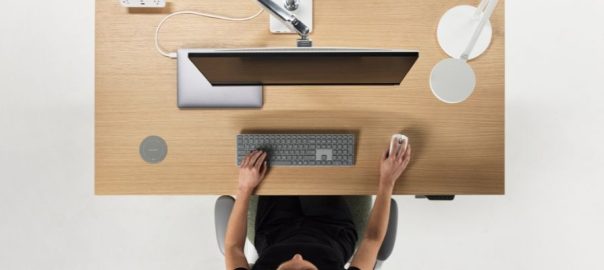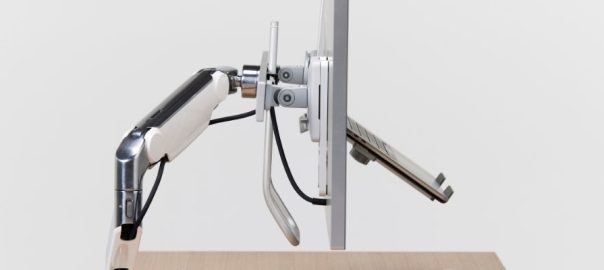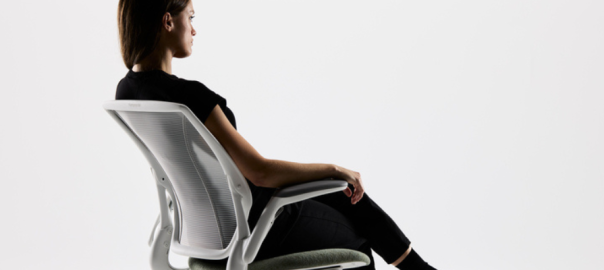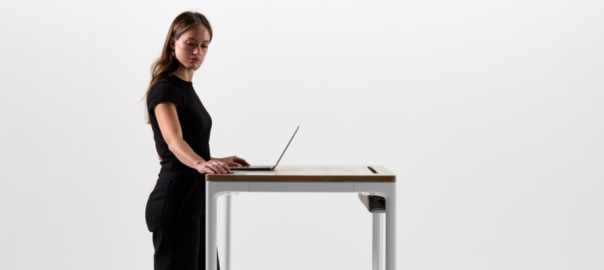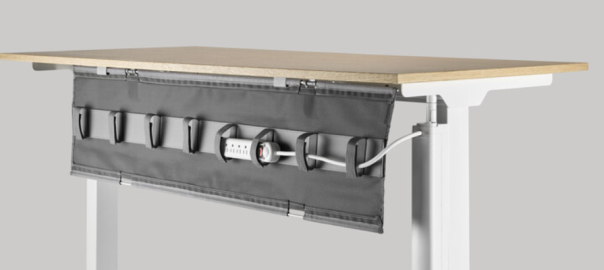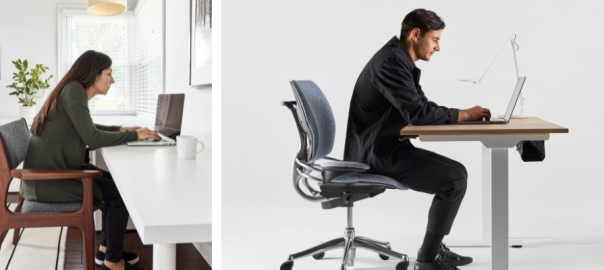High-back and mid-back are two common types of office chairs, each with significant advantages. High-back chairs are known for their extensive support that covers the entire back and head. This type of chair is ideal for individuals who spend long hours at their desks and require substantial support.
On the other hand, mid-back chairs provide adequate support for the middle and lower backs. They are suitable for active office environments where mobility and flexibility are required. Choosing between these two types of office chairs can feel daunting, impacting your posture, comfort, and productivity.
Office employees experience neck pain annually at a frequency ranging from 42% to 63%, with the highest incidence of neck problems (17% to 21%) observed among office workers compared to other occupations 1. Considering these statistics, choosing the right chair for your work needs is extremely essential.
This comprehensive guide compares high-back vs. mid-back chairs and aims to help you decide between the two.
Understanding High-Back Office Chairs
High-back office chairs provide extensive support from your lower back up to your neck and head. These chairs are beneficial if your job involves long hours of sitting, as they help maintain proper posture by supporting the spine’s natural curvature.
The tall backrest enhances comfort and reduces the strain on your back and shoulders. It prevents the fatigue and discomfort that often come with prolonged sitting. If you are looking for a chair that helps keep you focused and comfortable throughout the day, a high-back office chair might be the right choice.
Advantages of High-Back Office Chairs
High-back office chairs offer several advantages that enhance your comfort and work efficiency. Here’s a breakdown of their key benefits:
- Full back support: High-back chairs comprehensively support the entire back, including the lumbar, mid-back, and upper back areas. This support prevents strain during long hours of work.
- Neck and head support: These chairs often come with a headrest that supports your neck and head. This feature is especially beneficial, as it reduces the risk of neck stiffness and fatigue.
- Posture improvement: High-back chairs support the natural curve of your spine; thus, they promote good posture. Maintaining this proper alignment reduces the chances of developing back problems over time. 2
- Enhanced comfort: With their extensive padding and ability to support multiple body areas, high-back chairs provide a more comfortable seating experience. As a result, you can concentrate better and work for longer periods of time.
- Stress reduction: Proper support and comfort lower stress levels while working. High-back chairs help minimise physical discomfort, reduce stress, and improve workday productivity.
- Versatile use: These chairs are suitable for various tasks requiring extended sitting. It includes working at a computer, participating in long meetings, or handling phone calls.
Common Drawbacks of High-Back Office Chairs
While high-back office chairs offer many benefits, they also come with some drawbacks that are important to consider before making a purchase:
- Due to their larger size, high-back chairs typically require more space. This can be challenging in smaller office areas or tightly packed workspaces where every square inch counts.
- Due to their size and structure, these chairs may restrict movement. Moving around a small space can become cumbersome, which might not suit dynamic work environments where you must frequently move from one area to another.
- High-back chairs are often heavier than mid-back or low-back options. This makes them less ideal when you need to move or adjust your chair regularly.
- High-back office chairs are also more expensive due to the additional materials used for the extended back, as well as added features like headrests and advanced ergonomic adjustments.
- For some users, the support provided by high-back chairs can feel like ergonomic hazards that are too restrictive. This is especially true if they prefer greater freedom of movement in their upper body while seated.
When To Use a High-Back Office Chair?
Choosing a high-back office chair is particularly beneficial in certain situations:
- Suppose your job involves sitting for extended periods, such as during lengthy data analysis sessions or marathon meetings. A high-back chair can provide the necessary support to reduce strain and enhance comfort.
- High-back chairs often symbolise authority. This feature makes them a popular choice for executives and higher management. They complement the decor of executive offices and boardrooms well.
- For those suffering from back issues or who are particularly tall, the additional support of a high-back chair can help maintain correct posture and comfort. Using these chairs minimises the risk of further discomfort.
- If you’re setting up a home office where you might spend long hours, a high-back chair can be a worthwhile investment to ensure your workspace is as comfortable and supportive as possible.
Understanding Mid-Back Office Chairs
Mid-back office chairs typically have a backrest that extends up to the shoulder blades. They provide adequate support for the lumbar and mid-back regions.
Their design promotes good posture and movement, and it balances comfort and mobility. This type of chair is ideal for those who do not require the head and neck support that high-back chairs provide but still seek a chair that effectively supports daily office tasks.
Advantages of Mid-Back Office Chairs
Mid-back office chairs offer several advantages that make them a popular choice for a variety of work environments:
- Enhanced flexibility: These chairs allow for greater freedom of movement. Without the constraint of a high back, you can quickly shift and turn, making these chairs ideal for tasks that require frequent movement.
- Space efficiency: Mid-back chairs typically have a smaller footprint than high-back options. This makes them an excellent fit for smaller workspaces or offices where space is at a premium.
- Sufficient support: While they provide less coverage than high-back chairs, mid-back chairs still offer ample support for the lumbar and mid-back regions.
- Cost-effectiveness: Mid-back chairs are generally less expensive than their high-back counterparts. These are budget-friendly options for offices needing to furnish multiple workstations.
- Versatile design: Their design is less imposing, which helps them blend into a variety of office decors without dominating the space. Thus, these chairs are suitable for both professional offices and home workspaces.
- Ease of use: These chairs are often lighter and easier to handle. They are a good choice for environments where chairs may need to be moved or adjusted frequently.
Common Drawbacks of Mid-Back Office Chairs
Here are a few drawbacks of mid-back chairs you must consider:
- These chairs do not support the upper back and neck, disadvantaging users who spend long hours at their desks and require full back support to avoid discomfort or pain.
- Compared to high-back chairs, mid-back chairs often have fewer ergonomic adjustments. This limitation can make it harder to tailor the chair to individual comfort and posture needs.
- Tall people may find that mid-back chairs do not provide sufficient back support, as the backrest may not reach high enough to support their spine adequately. 3
- Due to their more straightforward design, mid-back chairs may not convey the same authority or prestige as high-back models, which can be essential in specific professional settings.
- Without full back and neck support, users might develop poor sitting habits, such as slouching. This will likely lead to long-term back problems if not addressed.
When To Use a Mid-Back Office Chair?
Selecting a mid-back office chair is particularly beneficial in specific scenarios:
- If your work involves moving around frequently or shifting between tasks that require getting up and sitting down often, a mid-back chair offers the flexibility and ease of movement you need.
- Mid-back chairs are ideal for those with limited office space, as they occupy less room than high-back chairs. They make your workspace appear more open and less cluttered.
- Mid-back chairs are well-suited for environments where sitting periods are intermittent and not prolonged. They provide sufficient support for shorter tasks without the bulk of a giant chair.
- If cost is a concern, mid-back chairs generally come at a lower price than their high-back counterparts.
- Mid-back chairs offer a great balance between comfort and convenience in conference rooms or collaborative spaces where the chair’s appearance and functionality are geared towards occasional use.
High-Back vs. Mid-Back Chair: A Detailed Comparison
A study showed that 90% of employees 4 spend over four hours a day on a computer. This highlights the importance of workplace interventions to have the right ergonomic furniture.
Here’s a detailed side-by-side comparison of high-back vs. mid-back chairs to help you choose the best ergonomic chair for your office:
| Feature | High-Back Office Chair | Mid-Back Office Chair |
| Support | Provides full back, shoulders, and neck support. Ideal for maintaining posture and preventing strain during long hours of sitting. | Supports the mid to upper back up to the shoulder blades. Promotes good posture but lacks neck support. |
| Ergonomic Benefits | Often comes with advanced ergonomic features like adjustable headrests and lumbar support for prolonged use. | Generally offers basic ergonomic adjustments. It focuses on lumbar support, without extensive features of high-back chairs. |
| Mobility | Larger and often heavier, which can restrict easy movement around a small office space. | Typically lighter and less bulky. Allows for easier mobility and fits well in limited spaces. |
| Aesthetics | More formal and executive in appearance, often chosen for senior management offices or boardrooms. | Sleeker and more versatile in design, it is suitable for both professional and casual office environments. |
| Cost | Due to the additional materials and features, these chairs are generally more expensive. | More affordable. A cost-effective option for offices needing to furnish multiple workstations. |
| Suitability | Best for users who spend long periods seated and need maximum support and comfort. | Ideal for users who require flexibility and mobility with moderate sitting durations. |
| Space Efficiency | It requires more space and is not suitable for very small offices. | More space-efficient, often preferred in co-working spaces and smaller offices. |
Tips for Choosing the Right Office Chair – Mid-Back vs. High-Back Chair
Choosing the right office chair is essential for maintaining comfort and productivity throughout the day, considering the benefits of ergonomics in the workplace. Here are some practical tips when looking for a mid-back vs. high-back chair.
Adjustability
Look for ergonomic furniture that offers multiple adjustment options. A good office chair should allow you to adjust the height, backrest, and armrests to fit your body. This flexibility lets you achieve an ergonomic sitting position that supports your back and limbs throughout the day.
Lumbar Support
Effective lower back support is essential. Ensure the chair has built-in lumbar support that matches the curve of your spine. Some chairs also offer adjustable lumbar support for your specific back shape and needs.
Seat Depth and Width
The seat should be wide and deep enough to comfortably support any user. Ideally, you should be able to sit with your back against the backrest and have about 2 to 4 inches of space between the back of your knees and the chair seat.
Material and Padding
Choose a chair with sufficient padding for prolonged sitting comfort. Opt for a seat covering made of breathable material. Fabric that breathes is preferable over more intricate surfaces, as it helps maintain body relaxation during extended periods of use.
Swivel and Mobility
A swivel chair can help you reach different desk areas without straining. Additionally, check for smooth-rolling casters that allow you to move around your workspace effortlessly.
Stability
Stability is one of the most essential features of high-quality ergonomic chairs. A good office chair should have a sturdy, five-point base. This ensures stability and reduces the chances of the chair tipping over when you lean or move in different directions.
Overall Comfort
The best chair for lower back pain at home is the one that provides you comfort. You’ll be spending significant time on it, so ensuring it feels right is essential. Check if the backrest follows the natural curve of your spine, and see if the armrests and the overall seat feel comfortable and supportive.
Summing Up
The decision between a high-back vs. mid-back chair hinges on immediate preferences and long-term comfort and productivity needs. Moving forward, consider the benefits of ergonomic chairs and how each chair type aligns with the nature of your work.
If your job requires extended periods of sitting or you struggle with back issues, a high-back chair might be the optimal choice because of its superior support and comfort features.
On the other hand, if you value flexibility and move frequently within your workspace, a mid-back chair could better serve your needs by offering adequate support without restricting movement.

